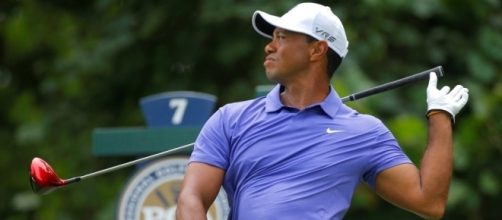American golfer Tiger Woods, widely regarded as one of the greatest of all time, is set to play competitive Golf for the first time in 15 months on Thursday. He will participate in his own tournament, the Hero World Challenge, with 17 fellow professionals at Albany in the Bahamas. As always with Woods, the eyes of the golfing world will be firmly fixed on him.
Woods is a 14-time major champion and former world No.1, but his last victory in one of golf’s biggest events came all the way back in 2008 at the US Open. Since then, he has endured a dramatic fallout from extra-marital affairs, followed by a series of injury setbacks.
He returns on Thursday after several back surgeries and having pulled out of a planned comeback event (the Safeway Open) in October. He justified that withdrawal by citing vulnerabilities in his game, but now insists he is ready to compete.
Don’t expect too much
Woods may have missed more than a year of tournament golf, and at the age of 40 his best years are surely behind him, but he is in typically bullish mood ahead of this week. Despite admitting nerves, Woods is positive and says he will look to “channel nervous energy into aggression, focus and concentration”.
He is clearly fired up about his return, but it remains to be seen whether he is physically strong enough to compete over 18 holes for four days.
He is currently ranked 879 in the world, and that tells its own story. He hasn’t won on the PGA Tour since 2013, missed the cut in three out of four majors in 2015 and shot three rounds in the 80s that season. He has the worst odds of anyone to win the tournament (not surprising in a field that includes plenty of US Ryder Cup players and major winners).
This week is as much about feeling his way back than looking to win. But this is a man who has won more than one-quarter of his PGA starts (79 in 313), so his body is likely to give out before his mind.
Still a huge draw
It says something about Woods’ status within the game that there is so much interest in what is essentially an exhibition event.
In his younger days, Woods was an irresistible force. Between the 1999 US PGA and the 2001 Masters, Woods collected five of the six majors played. He shot to prominence when he triumphed at the 1997 Masters as a 21-year-old, winning by an unprecedented 15 strokes.
Woods was among the first golfers to behave like a true athlete. He has changed the game forever, and is held responsible for the huge increase in prize money and sponsorship enjoyed by the leading players today. Many still pine to see his glory days restored.
He ranked twelfth on Forbes’ 2016 sporting rich list despite not having played at all this year. His endorsements are still worth $45 million a year. No matter what happens this week, Woods will be remembered as a golfing revolutionary.
Golf is beginning to move on
For many years, Woods’ absence from major events and failure to compete for the game’s highest honours has left a gaping hole. The interest in golf began to wane, with crowds noticeably down when Woods was absent from tournaments.
But there is a new crop of players emerging at the top of the game, and golf is suddenly looking capable of life after Tiger Woods. Jason Day, Rory McIlroy, Dustin Johnson and Jordan Spieth are all young, athletic major champions. They are all near their peak, making their rivalries all the more fascinating.
The sport’s growing appeal nowadays is highlighted by its successful reintroduction at this summer’s Olympic Games in Rio. Withdrawals prior to the Games had left many doubtful about whether golf deserved its place, but crowds flocked to see a thrilling contest won by Great Britain’s Justin Rose.
The world’s top players have all spoken of how much the game owes Woods, and how much they would like to see him back to his best. Thursday will hopefully mark a first positive step on that long journey.

